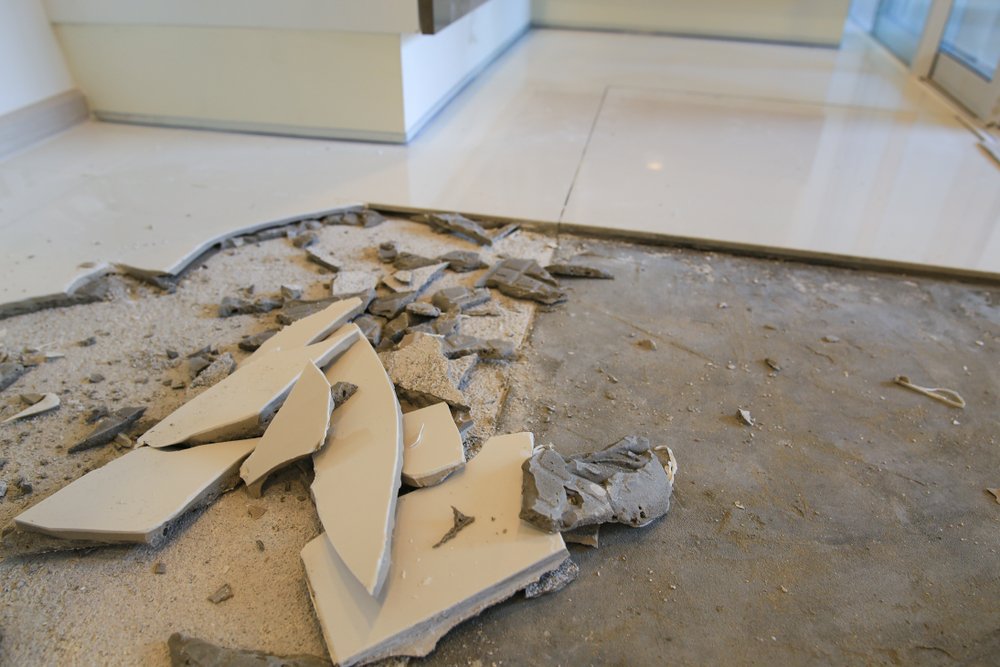Introduction
Asbestos, a naturally occurring mineral fiber, was once widely used in various building materials, including floor tiles, due to its durability and heat-resistant properties. However, it poses serious health risks when its fibers become airborne and are inhaled. Determining whether your tiles contain asbestos is crucial for ensuring the safety of your home and family.
Understanding Asbestos
Asbestos is a group of six naturally occurring fibrous minerals that are resistant to heat, fire, and chemicals. These properties made it a popular choice for insulation, roofing, and flooring materials in the past. However, prolonged exposure to asbestos fibers can lead to serious health issues, including lung cancer, mesothelioma, and asbestosis.
History of Asbestos
Use in Tiles During the mid-20th century, asbestos-containing materials, including floor tiles, were commonly installed in residential and commercial buildings. These tiles were favored for their durability and fire-resistant qualities. However, as the health risks associated with asbestos became evident, its use in construction materials declined.
Identifying Asbestos Tiles Visual Inspection:
One way to identify asbestos tiles is through a visual inspection. Asbestos floor tiles were often manufactured in 9-inch squares and came in various colors and patterns. However, visual identification alone is not conclusive, as many non-asbestos tiles can resemble asbestos-containing tiles.
Laboratory Testing:
To accurately determine whether your tiles contain asbestos, samples must be collected and sent to a certified laboratory for analysis. This involves carefully extracting a small piece of the tile and sending it to a lab equipped to perform asbestos testing.
Professional Inspection:
Hiring a certified asbestos inspector is another option for determining if your tiles contain asbestos. These professionals have the expertise and equipment to conduct thorough inspections and collect samples safely.

Dealing with Asbestos Tiles
If asbestos-containing tiles are found in your home, it’s essential to take appropriate measures to minimize exposure and ensure the safety of occupants. Depending on the condition of the tiles and local regulations, options may include encapsulation, enclosure, or removal by a licensed abatement contractor.
Encapsulation:
In some cases, encapsulating asbestos tiles with a sealant can prevent the release of fibers and reduce the risk of exposure. This involves applying a specialized coating or adhesive over the tiles to create a barrier.
Enclosure:
Another approach is to enclose asbestos tiles by installing a new flooring material over them. This method effectively seals the tiles and prevents the release of fibers into the air.
Professional Removal:
If encapsulation or enclosure is not feasible or if the tiles are damaged or deteriorating, professional removal by a licensed asbestos abatement contractor may be necessary. This process involves safely removing and disposing of the tiles in accordance with local regulations.
Health Risks of Asbestos Exposure
Exposure to asbestos fibers can have serious health consequences, particularly when the fibers are released into the air and inhaled. Asbestos-related diseases often have long latency periods, meaning symptoms may not manifest until years or even decades after exposure. The most common health risks associated with asbestos exposure include:
- Mesothelioma: Mesothelioma is a rare and aggressive form of cancer that affects the lining of the lungs, abdomen, or heart. It is primarily caused by inhaling asbestos fibers, and diagnosis is often challenging due to its long latency period.
- Lung Cancer: Inhalation of asbestos fibers can increase the risk of developing lung cancer, particularly among individuals who smoke. Asbestos exposure combined with smoking significantly amplifies the likelihood of developing lung cancer.
Conclusion
Ensuring the safety of your home and family requires proactive measures to identify and address potential asbestos hazards. By understanding the history of asbestos use in tiles, knowing how to identify asbestos-containing materials, and taking appropriate action if asbestos is present, you can mitigate the risks associated with exposure and protect your loved ones’ health and well-being. Remember, safety always comes first when dealing with asbestos-containing materials.
